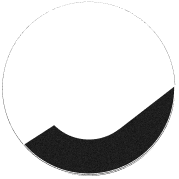Case study: how a Kaizen race prediction revolutionises your marathon running
Preparing for a marathon is a lot of work. Even if you follow all sorts of online training guides, by race day you might still be unclear about your capabilities. You likely haven’t run the full distance, and you might be wondering if you should be aiming for a two, three or four-hour target, or something in between.
You’re not quite sure how to pace yourself.
And that’s normal. You’re lacking some key data.
So you pick a target time based on a hunch and go for that. And depending on how you feel as you go, you vaguely try to adapt your pace, mile by mile, kilometre by kilometre.
Well marathons are long. So that’s likely two to four hours of chaos where errors of judgement can compound and leave you struggling.
In this post we’re going to show you how it doesn’t have to be like this. Not with a Kaizen race prediction. We’re going to open up a little, become a little vulnerable, and share the story of two marathons from a key member of the Kaizen team.
Part 1: Running a Marathon the Bad Way (Without a Kaizen race prediction)
Case in point—Fred Vincent, our founding product designer, general good guy and new dad.
A few years ago he decided that he wanted to do the Berlin marathon. He wanted a marathon on his list of achievements and told himself it would be good for his overall health.
At this stage he’d never heard of Kaizen. He trained using an app that logged his runs but nothing else. After six months race day swept over him like the coming of a birthday. He was feeling good, but even with months of training data, he still didn’t really know what he was capable of at the full distance.
He lacked clarity, yet he felt ambitious and set himself a target of 2 hours 40 minutes.
In the build up to the race, he stretched well, enjoyed the atmosphere. At the start line he wondered if he might be some way off his target time, but he also tricked himself into thinking that maybe he’d done enough.
And so the race began. The conditions were good—sunlight coming through the trees of the Tiergarten, a little heat on his shoulders, and a nice mid-September breeze. He felt excited, kept up with the pace runner, occasionally eyeing that blue flag attached to the pacer’s back.
By the midpoint, he felt some strain in his legs, but told himself he was OK.
But twenty minutes later, while running through the Wilmersdorf, the more boring part of the race—disaster struck.
His groin tightened. His achilles started to ache. That blue flag on the pacer’s back drifted away from him, and soon went out of sight.
He stopped and stretched—and then forced his stiffening body to get going again. But progress was difficult. His body started cramping. He persevered as well as he could. More and more of those blue pacer flags passed him, counting down less ambitious targets as they went.
Fred wasn’t in bad shape—he just wasn’t going at the pace his body was capable of going.
He finished, fell to the floor in a shadow cast by the Brandenburg Gate. He felt battered and bruised.
‘How do you feel?’ someone asked.
‘Not so great,’ he said. It was an understatement.
And he had missed his target by over an hour.
Part 2: Running a Marathon the Good Way (With a Kaizen race prediction)
Almost a year later, just before his second attempt at the Berlin marathon, a friend told Fred about Kaizen—and his marathon performance changed completely.
Kaizen took Freddie’s wholesome, abundant training data already stored on his Strava app and number crunched the average pace and overall load via established sports science.
Out popped an accurate race prediction.
So on Fred’s second marathon the app told him that, despite six months of training, he was still way behind his more realistic 3 hours 05 minute target time.
The algorithm had told him the truth just like a sports scientist/personal trainer would have done.
In a way, it was as if he had his own personal sports scientist in his pocket. Kaizen gave him clarity and a realistic idea of what his body was capable of.
And he readjusted his goal accordingly. This time he wanted to enjoy the marathon. He wanted to have a good time.
He felt clear-headed about what he could achieve. Come race day—once more surrounded by the listing green leaves of the Tiergarten—he had a sense of focus.
He paced himself correctly—so well in fact that he sailed through the second race, breezed through the halfway point, through the streets of the Wilmersdorf, and onto the finish line next to the Brandenburg Gate.
He felt good, enjoyed it, and he nailed his time.
This is what a race prediction from Kaizen can do.
With Kaizen you cut out the chaos, gain focus and run your best possible race.
Do you have any similar stories?
Have you ever tried to follow the pace of a runner who turned out to be a little quicker than you had imagined?
Clarity is just a step away—click here for a free trial for Kaizen on the app store.
And remember an accurate race prediction is only one half of the Kaizen magic—follow us on Instagram for our upcoming posts on how it can improve your training too.
And follow the link if you’re interested in our Autumn/Winter running guide.




